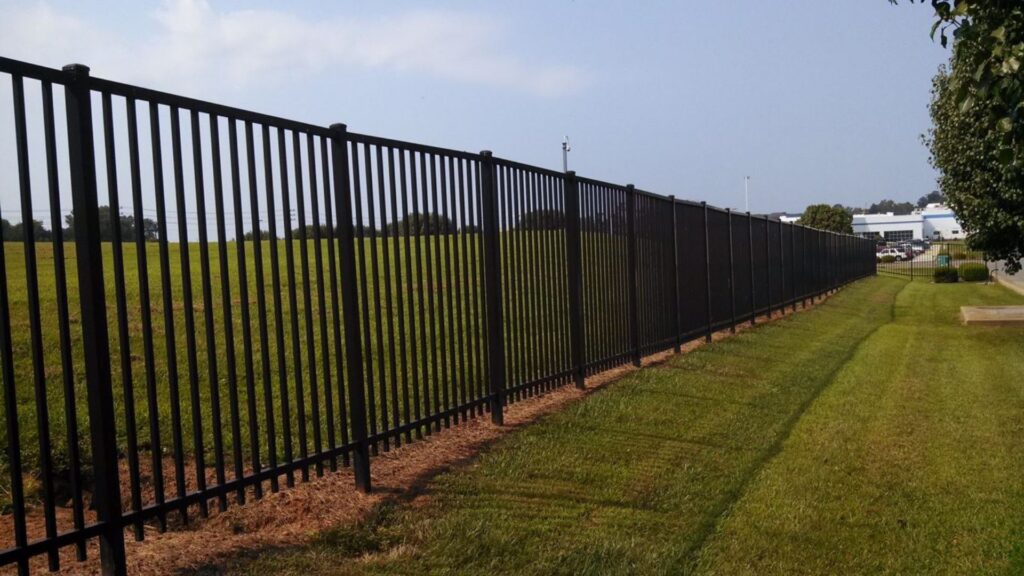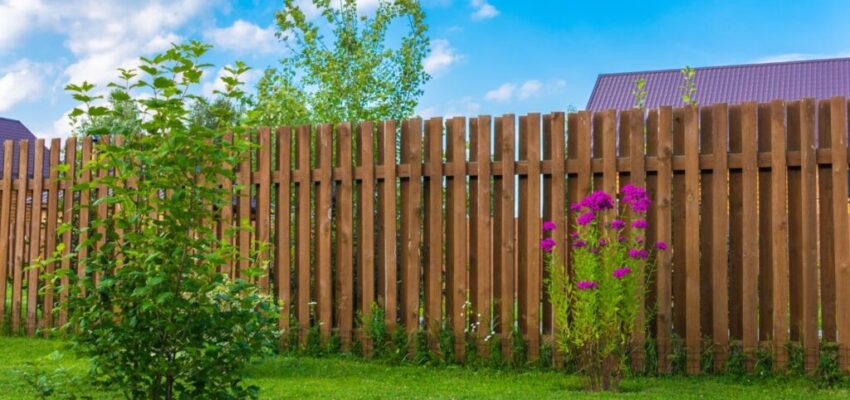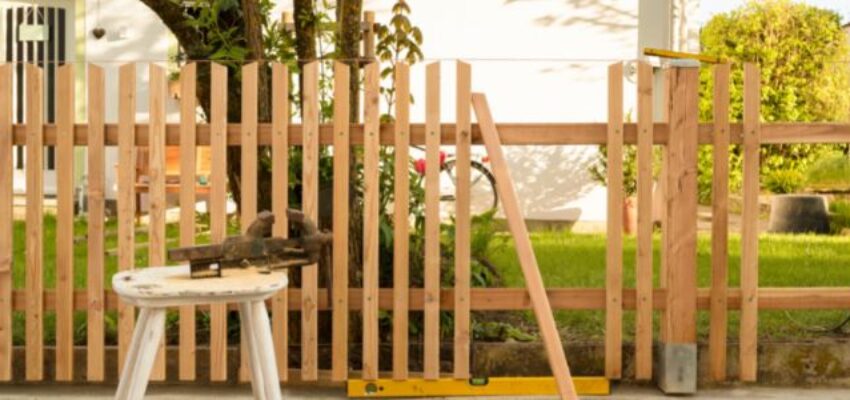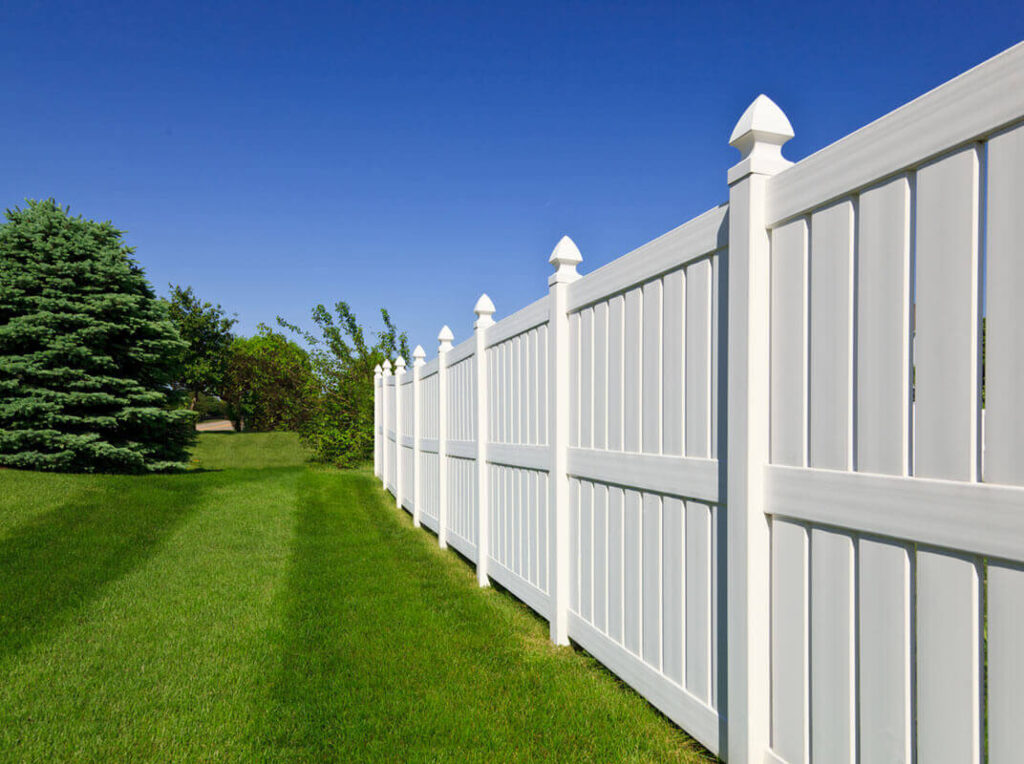Are you looking to maximize the lifespan of your fence? Wondering what you can do to keep it in tip-top shape for years to come? Well, you’ve come to the right place! In this article, we’ll discuss some helpful dos and don’ts that can help you extend the lifespan of your fence. So, let’s get started!
First off, we’ll dive into the dos of maximizing your fence’s lifespan. From regular maintenance to proper installation techniques, we’ll cover all the necessary steps you should take to ensure your fence stands strong for many years. We’ll also provide tips on choosing the right materials and coatings for your specific climate and terrain. But that’s not all! We’ll also go beyond the basics and discuss some innovative ideas for enhancing your fence’s durability, such as adding protective barriers or using eco-friendly treatment methods.
Next, we’ll move on to the don’ts. These are the common mistakes that homeowners often make, unknowingly shortening the lifespan of their beloved fences. We’ll expose some myths and misconceptions about fence maintenance and reveal the harmful practices that can lead to premature wear and tear. By avoiding these don’ts, you’ll be able to save money on repairs and replacement in the long run.
So, whether you’re a proud fence owner or planning to install a new one, stay tuned for our upcoming article on maximizing fence lifespan! We’ll provide you with all the information you need to keep your fence looking great and standing strong for years to come.
Maximizing Fence Lifespan: Dos and Don’ts
A well-maintained fence not only enhances the aesthetics of your property but also provides security and privacy. However, the lifespan of a fence can vary depending on various factors. By understanding these factors and implementing the right practices, you can maximize the lifespan of your fence. In this article, we will discuss the dos and don’ts of maximizing fence lifespan.

Factors Affecting Fence Lifespan
Weather Conditions
One of the primary factors that can impact the lifespan of a fence is the weather conditions it is exposed to. Harsh weather elements such as heavy rainfall, snow, extreme temperatures, and strong winds can take a toll on your fence over time. Different fence materials have varying resistance to weather conditions, so it is important to choose the right material based on your local climate.
Material Choice
The choice of fence material is crucial in determining its durability and lifespan. There are various materials available in the market, each with its own pros and cons. Some popular options include:
-
Wood Fencing: Wood fences have a classic look and can last for several years if properly maintained. However, they require regular staining or painting and are susceptible to rotting, warping, and pest infestation.
-
Vinyl Fencing: Vinyl fences are low maintenance and resistant to weather elements, such as moisture and UV rays. They are also durable and can withstand impact. However, they can become brittle in extremely cold temperatures.
-
Chain Link Fencing: Chain link fences are affordable, durable, and low maintenance. They are resistant to weather conditions but may require periodic repairs, especially if the links become loose or bent.
-
Wrought Iron Fencing: Wrought iron fences are known for their elegance and longevity. However, they are prone to rust and require regular maintenance to prevent corrosion.
-
Aluminum Fencing: Aluminum fences are lightweight, rust-resistant, and require minimal maintenance. They are also available in various styles and colors, offering versatility to homeowners.
When choosing a fence material, consider factors such as durability, maintenance requirements, and aesthetic appeal.
Proper Installation
Proper installation is crucial for the longevity of your fence. Improperly installed fences are prone to leaning, sagging, and other structural issues. Here are some dos and don’ts for fence installation:
-
Do: Prepare the Ground Properly – Clear the area of any debris and ensure a level ground before installing your fence posts.
-
Do: Secure the Foundation – Dig deep holes for the fence posts and use concrete to secure them firmly in place. This will provide stability to the fence.
-
Do: Follow the Correct Measurements – Accurate measurements are essential to ensure that your fence is properly aligned. Use a level to check for straightness during installation.
-
Don’t: Overlook Utility Lines – Before digging holes for the fence posts, make sure to call your local utility companies to identify any underground utility lines.
-
Don’t: Ignore Property Lines – It is important to know and respect your property boundaries to avoid disputes with neighbors. Consult with a surveyor if needed.
Maintenance Practices
Regular maintenance is essential for prolonging the lifespan of your fence. Here are some maintenance tips for different types of fences:
-
Regular Cleaning: Remove dirt, debris, and mold from your fence using a mild detergent and water. This will prevent the buildup of grime and maintain the appearance of your fence.
-
Inspecting for Damage: Regularly inspect your fence for any signs of damage, such as cracked or rotting wood, loose or broken chain links, or corroded metal. Address any issues promptly to prevent further deterioration.
-
Treating Wood Fences: If you have a wood fence, it is important to regularly stain or paint it to protect it from moisture and UV rays. Apply a wood preservative to prevent rot and pest infestation.
-
Repairing Chain Links: If you notice any loose or broken chain links, repair them immediately to maintain the security and integrity of your fence.
-
Maintaining Vinyl and Aluminum Fences: Vinyl and aluminum fences are low maintenance, but occasional cleaning may be required to remove dirt or stains. Check for any loose screws or fasteners and tighten them if necessary.
Common Fence Problems and Solutions
Even with proper installation and maintenance, fences can encounter certain issues over time. Here are some common problems and their solutions:
Leaning or Sagging Fences
One of the most common problems with fences is leaning or sagging. This can occur due to unstable soil, improper installation, or the weight of vegetation growing against the fence. To fix this issue, you may need to reinforce the fence posts by adding braces or replacing them if necessary.
Rotting Wood
Wood fences are susceptible to rotting, especially if they are not properly maintained. Regularly inspect your fence for signs of rot, such as soft or discolored wood. If the rot is limited to a certain area, you can replace the affected panels or boards. However, if the rot has spread extensively, it may be necessary to replace the entire fence.
Rust and Corrosion
Metal fences, such as wrought iron or chain link fences, are prone to rust and corrosion over time. Regularly inspect your fence for any signs of rust and address it promptly. Remove the rust using a wire brush and apply a rust inhibitor or primer. Then, paint the affected areas to prevent further corrosion.
Loose or Broken Chain Links
Chain link fences may develop loose or broken chain links over time, compromising the security of your property. You can repair these issues by removing the damaged links and replacing them with new ones. Ensure that the replaced links are properly attached and secure.
Fading or Peeling Paint
If your fence is painted, it is common for the paint to fade or peel over time, especially when exposed to harsh weather conditions. To fix this issue, scrape off any loose or peeling paint, sand the surface, and apply a fresh coat of paint. Make sure to choose a high-quality paint that is specifically formulated for outdoor use.

Enhancing Fence Lifespan with Protective Coatings
Applying protective coatings can significantly enhance the lifespan of your fence by providing an extra layer of protection against weather elements and other factors. Here are some considerations for using protective coatings:
Choosing the Right Coating
When selecting a protective coating, consider the material of your fence and the level of protection required. For wood fences, choose a coating that provides UV protection, water repellency, and mold resistance. For metal fences, opt for coatings that offer rust and corrosion resistance.
Applying Coatings Correctly
Follow the manufacturer’s instructions for applying the protective coating. Make sure to clean the surface of your fence thoroughly before application to ensure proper adhesion. Use a brush, roller, or sprayer to evenly apply the coating, and allow sufficient drying time before exposing the fence to moisture or other elements.
Benefits of Protective Coatings
Protective coatings not only extend the lifespan of your fence but also enhance its appearance. They provide a barrier against moisture, UV rays, and other elements, preventing damage such as rot, fading, and corrosion. Additionally, coatings can make the cleaning and maintenance process easier by repelling dirt and grime.
Utilizing Plantings and Landscaping for Fence Longevity
Strategic plantings and landscaping can complement your fence and contribute to its longevity. Here are some ways to enhance your fence’s lifespan using plantings:
Planting Shrubs and Trees Along the Fence Line
Planting shrubs and trees along the fence line can provide additional protection from wind and other weather elements. They can act as a natural barrier, reducing the impact of strong winds and preventing soil erosion near the fence. However, ensure that the plants do not have invasive root systems that can damage the fence.
Creating a Barrier to Avoid Soil Erosion
Soil erosion can undermine the stability of your fence. Plant ground cover, such as grass or low-growing plants, to help prevent erosion. Additionally, installing a gravel or mulch strip along the fence line can help retain moisture and prevent the soil from washing away during heavy rainfall.
Strategic Placement of Vines and Climbing Plants
Vines and climbing plants can add beauty and enhance the privacy of your fence. However, choose non-invasive species and avoid plants that can cause damage, such as ivy or heavy climbers. Properly train and prune the plants to prevent them from overwhelming or damaging the fence structure.

Resolving Fence Disputes and Boundary Issues
Fence disputes and boundary issues can arise between neighbors, causing unnecessary stress and conflicts. Here are some steps to resolve such issues amicably:
Understanding Property Ownership
Before installing a fence, it is essential to know the exact property boundaries. Refer to your property deed, consult with a surveyor if needed, and communicate with your neighbor to ensure mutual understanding and agreement.
Consulting with Neighbors
If you are planning to install a new fence or make changes to an existing one, it is courteous to inform your neighbors beforehand. Discuss the plans and address any concerns they may have. Being considerate can help avoid potential disputes and maintain good neighborly relations.
Engaging Mediators or Legal Professionals
If fence disputes cannot be resolved through direct communication, you may consider engaging third-party mediators or legal professionals. They can help facilitate discussions, provide guidance on local regulations, and assist in finding a mutually acceptable solution.
Adding Security Features for Longer Lasting Fences
Enhancing the security of your fence not only prolongs its lifespan but also provides peace of mind. Here are some security features to consider:
Installing Security Cameras
Installing security cameras near your fence can deter trespassers and provide evidence in case of any incidents. Position the cameras strategically to cover the entire fence perimeter for maximum effectiveness.
Equipping Motion Sensor Alarms
Motion sensor alarms can alert you to any unauthorized movements near your fence. When triggered, these alarms emit a loud sound or send a notification to your mobile device, acting as a deterrent against potential intruders.
Choosing Anti-Climb Enhancements
To prevent unauthorized access to your property, consider adding anti-climb enhancements to your fence. These can include spike strips, anti-climb coatings, or decorative elements that make it difficult for intruders to scale the fence.

DIY Fence Repair Tips and Tricks
Minor fence repairs can often be done by homeowners themselves. Here are some common DIY fence repair tips:
Replacing Damaged Panels or Pickets
If you have a fence with individual panels or pickets, you can replace the damaged ones by removing the fasteners and attaching new panels or pickets in their place. Ensure that the new ones match the existing style and dimensions.
Repairing Loose Posts
Loose fence posts can compromise the stability of your fence. To fix this issue, use a post level to ensure the post is straight, then add additional support by packing concrete or gravel around the post and filling the hole.
Fixing Gate Issues
If your fence has a gate that is not functioning properly, inspect the hinges and latch for any loose screws or misalignment. Tighten or adjust the hardware as needed. Lubricate the hinges to ensure smooth operation.
Dealing with Small Fence Repairs
For small repairs, such as fixing a loose board or reattaching a broken chain link, use appropriate tools, such as a hammer, nails, or fence repair kits. Follow the manufacturer’s instructions for the best results.
Extending Fence Lifespan through Proper Painting
Proper painting of your fence not only enhances its appearance but also protects it from weather elements. Here are some steps to consider when painting your fence:
Preparation Steps for Painting
Before painting, clean the fence surface thoroughly using a pressure washer or a scrub brush and mild detergent. Remove any loose or peeling paint, sand the surface if needed, and allow it to dry completely before proceeding.
Choosing the Right Paint
Select a high-quality exterior paint that is suitable for your fence material. Consider factors such as weather resistance, durability, and UV protection. Opt for paints specifically formulated for outdoor use to ensure long-lasting results.
Applying Paint Correctly
Use a brush, roller, or sprayer to evenly apply the paint on the fence surface. Start from the top and work your way down, applying thin and even coats. Allow each coat to dry completely before applying the next one. Follow the manufacturer’s instructions regarding the required drying time.
Maintenance Tips for Painted Fences
Regularly inspect your painted fence for any signs of chipping or peeling paint. Address these issues promptly by scraping off the damaged paint, sanding the surface, and repainting the affected areas. Routine touch-ups and maintenance will help prolong the lifespan of your painted fence.

Weatherproofing Techniques for Long-Lasting Fences
Weatherproofing your fence can significantly enhance its durability and lifespan. Here are some techniques to consider:
Waterproofing Wood Fences
Wood fences are vulnerable to moisture, which can lead to rotting and warping. To waterproof your wood fence, apply a waterproofing sealant or stain that contains UV inhibitors. This will protect the wood from water penetration and prevent damage caused by moisture.
Sealing Vinyl and Aluminum Fences
Although vinyl and aluminum fences are resistant to moisture, sealing them can provide an extra layer of protection against the elements. Use a vinyl or metal fence sealant to maintain their appearance and prevent any potential damage.
Protecting Fences from Sun and Heat
UV rays and extreme heat can cause fading, warping, and degradation of fence materials. To protect your fence from these elements, choose materials that are UV-resistant and have a high heat tolerance. Apply a UV-resistant coating or paint to further enhance protection against the sun’s harmful rays.
Winterizing Fences to Prevent Damage
During winter, freezing temperatures and moisture can damage your fence. To winterize your fence, ensure that it is in good condition before the onset of winter. Repair any damage, clean the fence surface, and apply a protective coating if necessary. Additionally, avoid piling snow against the fence, as it can contribute to moisture buildup and damage.
Considering Fence Replacement: Signs to Watch Out For
Despite proper maintenance efforts, there may come a time when replacing your fence is the most practical option. Here are some signs that indicate it may be time for fence replacement:
Excessive Damage
If your fence has extensive damage, such as rotting wood, extensive rust, or significant leaning or sagging, it may be more cost-effective to replace it rather than repeatedly repairing it. Assess the overall condition of your fence to determine if replacement is necessary.
Hazardous Conditions
A damaged or unstable fence can pose safety risks, especially if it is leaning, sagging, or has loose or broken parts. If your fence poses a hazard to individuals or pets, it is crucial to prioritize replacement for the safety of everyone involved.
Multiple Repairs
If your fence requires frequent repairs and maintenance, it may be a sign that it has reached the end of its lifespan. Continuously investing time and money into repairs may not be sustainable in the long run. Consider replacing your fence with a more durable and low-maintenance option.
Outdated or Unwanted Styles
If your fence style no longer matches the aesthetic of your property or you simply want a change, it may be time for replacement. Upgrading to a more modern or visually appealing fence can enhance your property’s curb appeal and overall value.
Cost-Effectiveness of Replacement
Sometimes, the cost of repairs and maintenance for an old fence can outweigh the benefits of replacing it. If the cost of continuous repairs is becoming increasingly expensive, it might be more budget-friendly to invest in a new fence that requires minimal maintenance and offers a longer lifespan.
Conclusion
Maximizing the lifespan of your fence requires careful consideration of various factors, including weather conditions, material choice, proper installation, and maintenance practices. By following the dos and don’ts outlined in this article, you can ensure that your fence not only lasts for years to come but also enhances the beauty, security, and privacy of your property. Remember to choose the right fence material, install it properly, maintain it regularly, and, if necessary, consider replacement when the time is right. By taking these steps, you can maximize the lifespan of your fence and enjoy its benefits for many years.